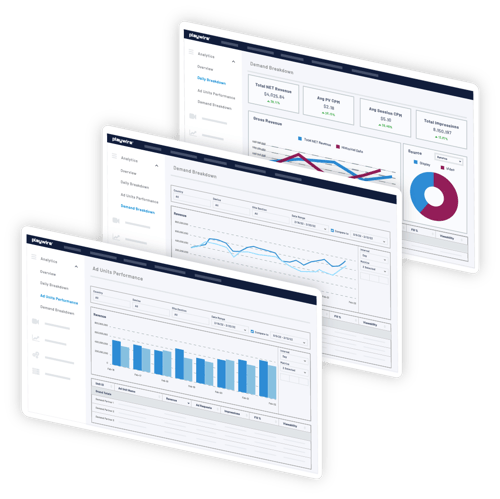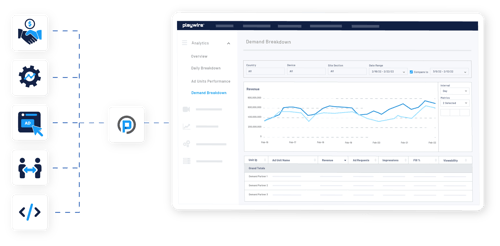Best Practices for Managing Poor Ad Yield Performance
July 25, 2022
Editorial Policy
All of our content is generated by subject matter experts with years of ad tech experience and structured by writers and educators for ease of use and digestibility. Learn more about our rigorous interview, content production and review process here.

Key Points
- The complexity of the ad tech ecosystem means that no matter what you do, you will run into issues in the supply chain that reduce your performance.
- Monitoring your performance constantly is the only way to stay on top of it.
- This article provides best practices for monitoring performance and diagnosing issues to find the core problem causing the performance drop.
Ad yield management is no easy task. One of the primary functions of yield ops professionals is to keep track of site performance and catch drops in performance as soon as possible. The faster you catch a performance drop, and correct it, the less total revenue you sacrifice.
In today’s ad tech ecosystem, there are so many complexities that performance drops are simply inevitable. If you're managing your entire ad tech stack in-house, there is no way to set it and forget it.
So, you’ll need a good alerting system for catching drops in performance quickly and processes to identify the source of the drop and remedy the problem. To help, we’ve tapped our own internal ad yield management team for some of their best practices to share with you.
-- Article Continues Below --
Read the Guide: How to Build Your Target CPM and Price Floor Strategy
Catching Ad Yield Performance Dips
You’ll need to start by building an alerting system to catch drops in performance before they can create huge dips in your income. The ultimate metric we recommend watching is your page view CPM.
What is Page View CPM?
Page view CPM (PV CPM) is the gold standard metric for ad revenue for publishers. To get this amount, you’ll take your total ad revenue over a given period of time, divide it by your number of page views over the same time period, then multiply by 1,000 to get an effective page view CPM.
This metric helps to remove any effects of increases in page views from your calculation to help you truly understand how your ads are working.
You should have some sort of dashboard built where you can see this number real time and easily compare with previous periods. If your current system doesn’t make it easy to look at page view CPM in these ways, it might be time to find one.
Checking Your Page View CPM
You should be looking at your page view CPM at least every day and compare it to previous periods. On a daily basis, you should be comparing your page view CPM performance:
- Day over day
- Week over week
- Year over year
If your page view CPM performance steps out of line with expectations, you should dig in to answer "why" it has dropped. Defining "why" will help you understand if you have an ad yield specific problem, or some other reason for performance drops.
Identifying the Sources of Ad Yield Performance Drops
Now that you know there is an issue, you’re just at the beginning of your journey. It is now time to begin to diagnose the problem.
Below is a list of potential areas where the performance issue may be coming from and an idea of how to diagnose if said issue is actually the one causing your performance drop. This is by no means an exhaustive list, but a great starting point for finding problems.

Changes in User Behavior or Experience
Often an issue with ad yield isn’t even an issue with ads at all. Check first to see if you’ve had major changes in site traffic or user behavior on the site. A good metric to look at as you check this is Ad Calls per Page View. If you see a huge difference in the number of ad calls you’re making per page view when compared to historical ad calls, it is a good indicator that something is off on the experience side of things.
Some other things you can look at include:
- Geographical mix of the traffic
- Changes in traffic sources (e.g. Facebook users might be less valuable on your site than organic search traffic)
- Page engagement: You can look for changes in metrics like page views per visit and average time on page.
Issues with a Particular Ad Unit
Now you can step deeper into identifying if a particular ad unit is causing your performance problems. Look at the performance of each ad unit compared with historical performance to isolate if it is one unit that is causing a performance issue.
.gif?width=500&name=Web_interstitial_F7F7F7%20(1).gif)
Pro tip: You may even want to dive one level deeper and check on the different creative sizes being called from that ad unit (as some ad units allow for calling multiple creative sizes).
Issues with a Particular Demand Source
Check historical performance across each of the demand partners or supply side platforms (SSPs) in your header bidding stack. This will help you isolate if one SSP has stopped serving or is not performing the same as it has historically. You can look at the number of ad requests coming from each SSP and compare it to historical data to help as well.
Pro tip: You may even want to go a step further and break down performance by SSP across different device categories as well to see if it is one category of devices that is struggling on a particular demand source.
--Article Continues Below --
Visit the Header Bidding Resource Center
And Many More
While the items listed above are some of the most common culprits for ad yield performance drops, they are far from the only ones. You can break down your page view CPM in a number of other ways in order to isolate problems stemming from other factors including device, country, browser, and more.
You may also want to look at metrics like viewability and click-through rates and compare them against historical metrics to look for any discrepancies that might provide insights.
Correcting Issues
While it feels like we’ve run a marathon already, all we’ve done thus far is find the problem. Now comes the herculean task of actually fixing the problem.
Sometimes the fix will be simple and obvious. Sometimes it won’t.
Sometimes the fix will involve your engineering and development teams. Sometimes it won’t.
Sometimes the fix will be out of your control, and you may need to talk to a demand partner to try and fix it. (It really helps to have a good relationship with your SSPs for this one.) Sometimes it won’t.
Basically, the point of all of this is: each problem, once identified, will come with its own unique fix. As you tackle problems, you’ll need to figure out how to fix them as they come. This requires a team with both depth and breadth across a number of skills including ad operations, development, relationship management, and more.
The Easy Button
Looking for the easy way out? We don’t blame you. Luckily we’ve built a team with both the depth and breadth of expertise needed to both diagnose and fix problems.

Our Yield Ops team keeps a 24/7 watch on the performance of all the websites and apps in the Playwire network, ensuring that your revenue is always protected. And, if that wasn’t enough, they are constantly working in concert with our AI and machine learning algorithms to find unique opportunities to optimize and increase your revenue.
Apply now to learn more about the revenue you could be earning.

-1.png?width=800&height=157&name=1-playwire-logo-primary-2021%20(1)-1.png)





